I spent a weekend at Point Reyes National Seashore, a vastly underrated national park in California north of San Francisco. I planned to spend Saturday taking classes and Sunday hiking nine miles through the Tule Elk reserve to do some tracking and observation. Unfortunately, my Sunday was “cancelled” due to car trouble. 🙁
Between classes, I relaxed at Kule Loklo. Kule Loklo is a re-creation of a Coast Miwok village as it would look about 200 years ago. It’s used as a setting for educational programs and traditional skills classes. I found the visit interesting and thought I would share it with you. I know little about the Miwok, since this is not my home area. So most of the information I’m sharing comes from park documentation.
This is a picture of the main sweat lodge. It is still used as a ceremonial sweat lodge so the general public is not permitted to enter. It is a very large structure buried beneath a mound.
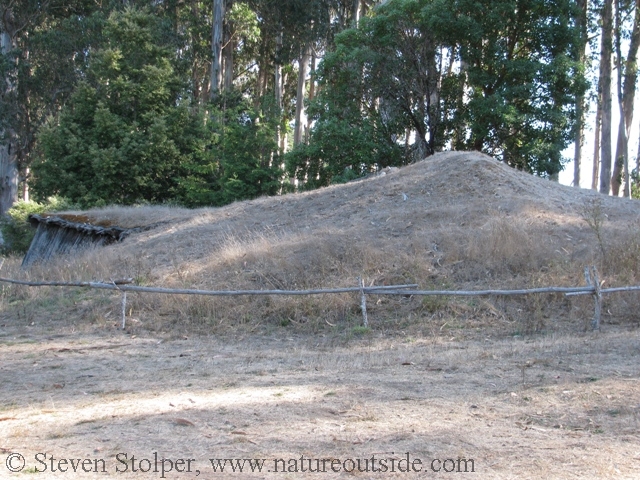
Village Sweat Lodge
The villagers lived in “kotca” (place where the people live). Extended families of five or more may have lived in these structures. They were constructed of Tule (a grass) or Redwood bark. They are conical in shape. Near each kotca is an acorn granary. With similar construction, the granaries protected the acorns from insect pests and other animals. They appeared to keep the acorns high off the ground and protect them from the weather.
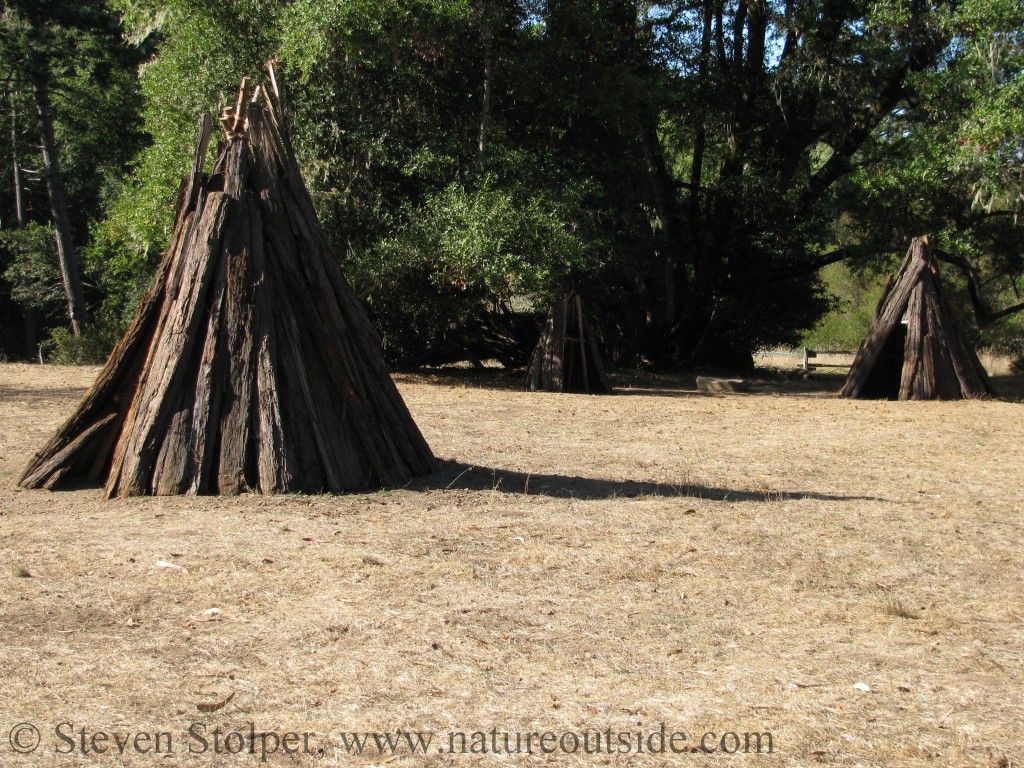
Village
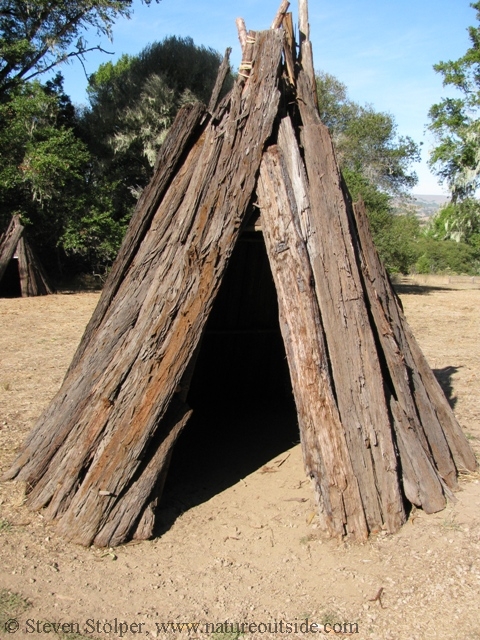
Kotca
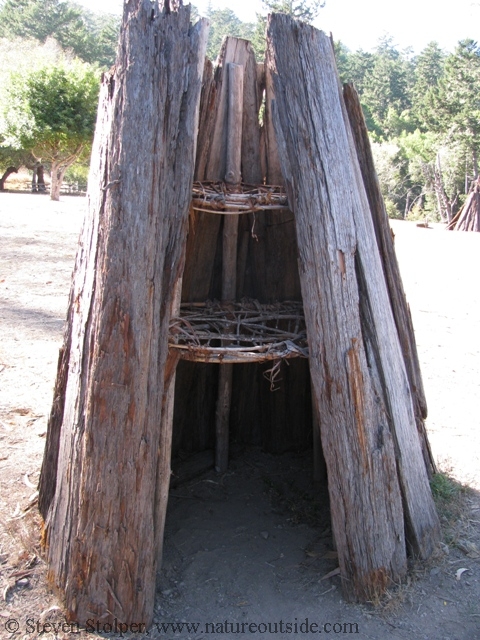
Acorn granary
The sides of the kotca are enormous slabs of redwood bark. The poles that support the structure are lashed together. The reconstructions were lashed with twine.
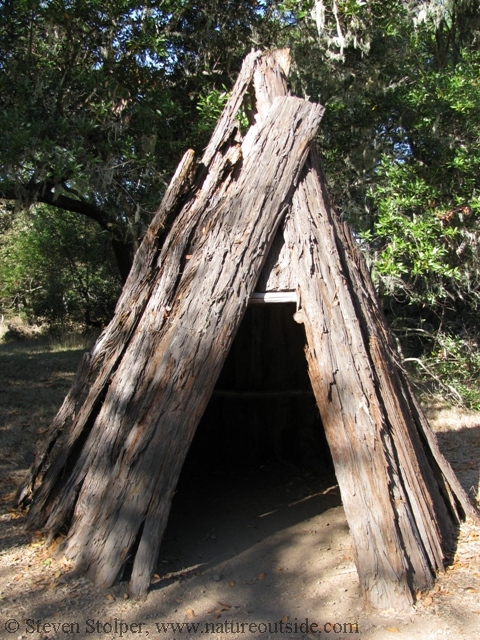
Another kotca
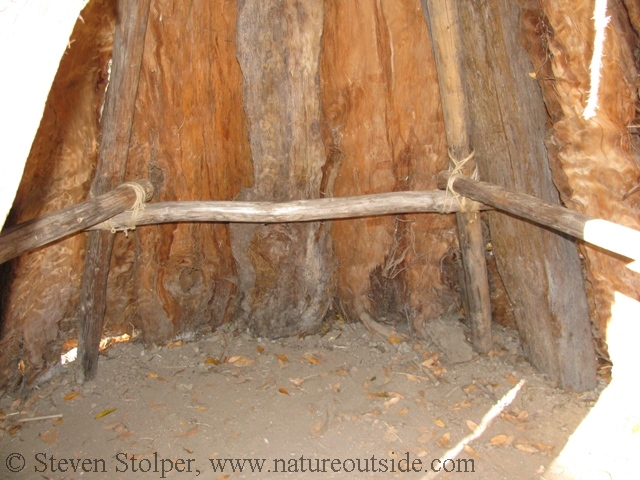
Inside base of kotca
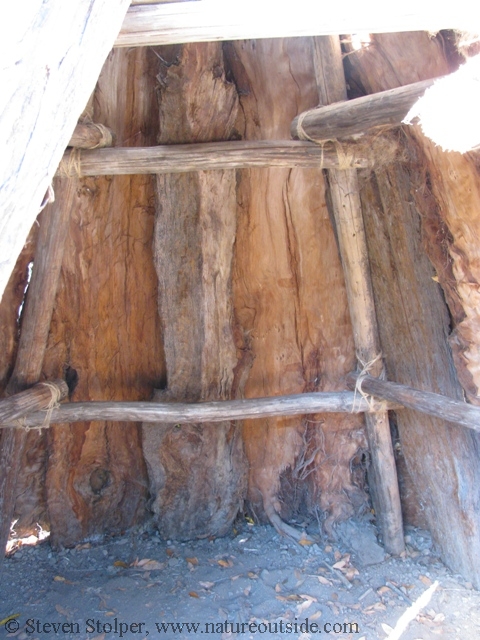
Interior wall of kotka
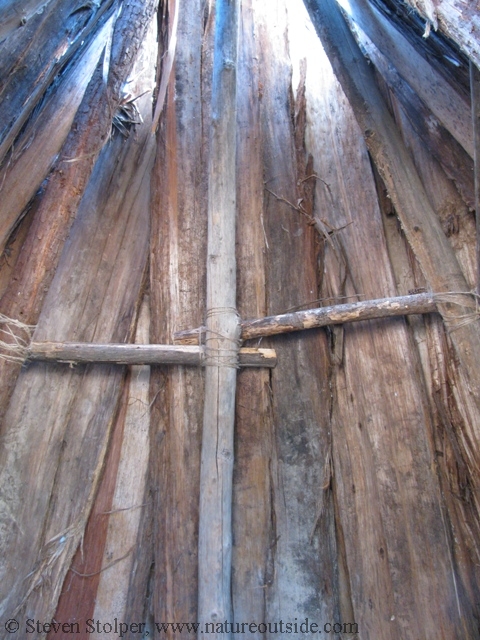
Interior of kotka looking up
The village also had a family sweat lodge that I was permitted to enter. It is also underneath an earth mound. A low-ceilinged tunnel leads to a central chamber. I have tried to reproduce the lighting, but the inside is actually darker than shown. It was the kind of place that inspired the imagination.

Entrance to family sweat lodge
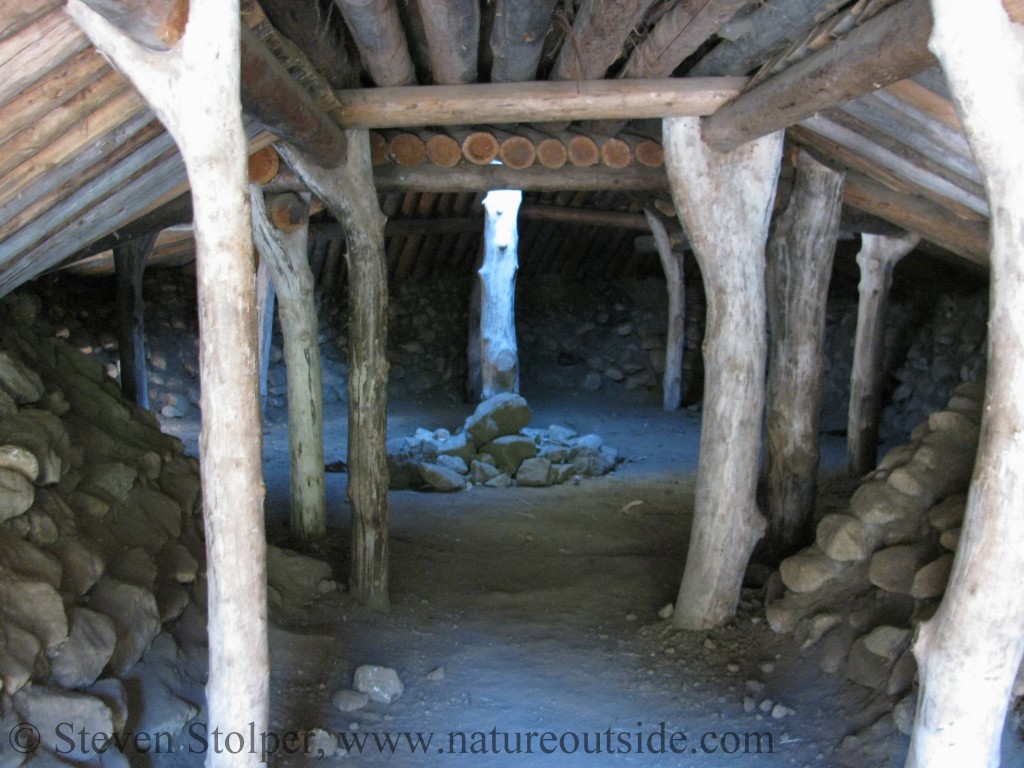
Inside sweat lodge entrance
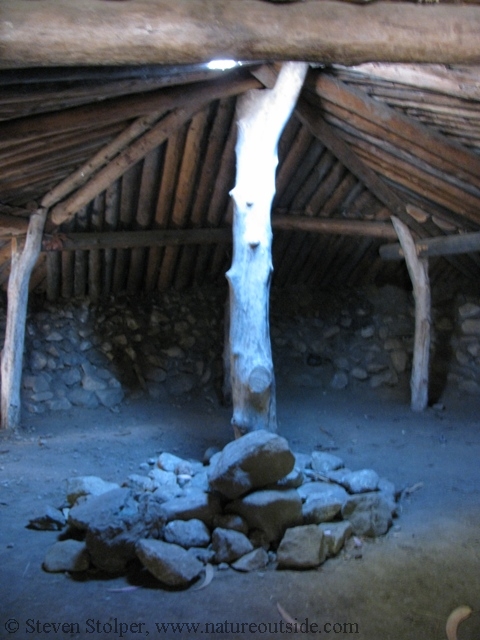
Family sweat lodge chamber

Roof of family sweat lodge
For those of you who have not been to Pt. Reyes, it has an incredible diversity of wildlife from Elk to Elephant Seals. Here is a picture of some California Quail near the visitor center. You really have to go out of your way to see wildlife. 🙂
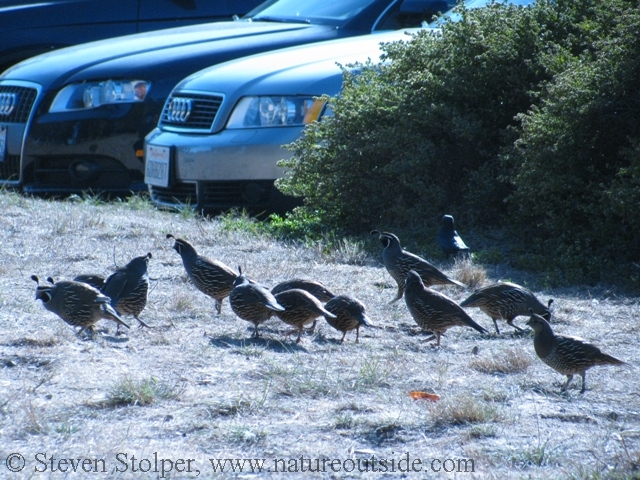
California Quail are easily identified by the Audis they drive
Share your thoughts
Have you visited any interesting reconstructions?
More Natural History on NatureOutside
Archaeology, Technology, and Native Peoples
The Tuibun of Coyote Hills (Part 1)
The Tuibun of Coyote Hills (Part 2)
If you enjoyed this article, you might like others in the Trips Section.

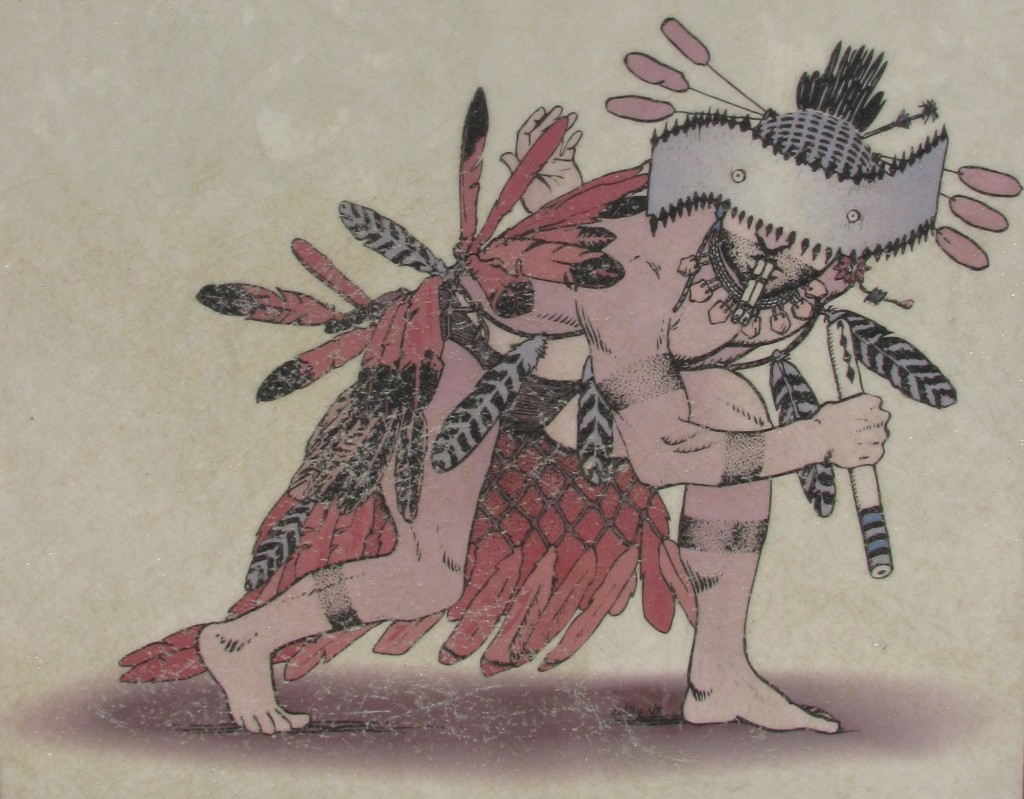

Leave a Comment